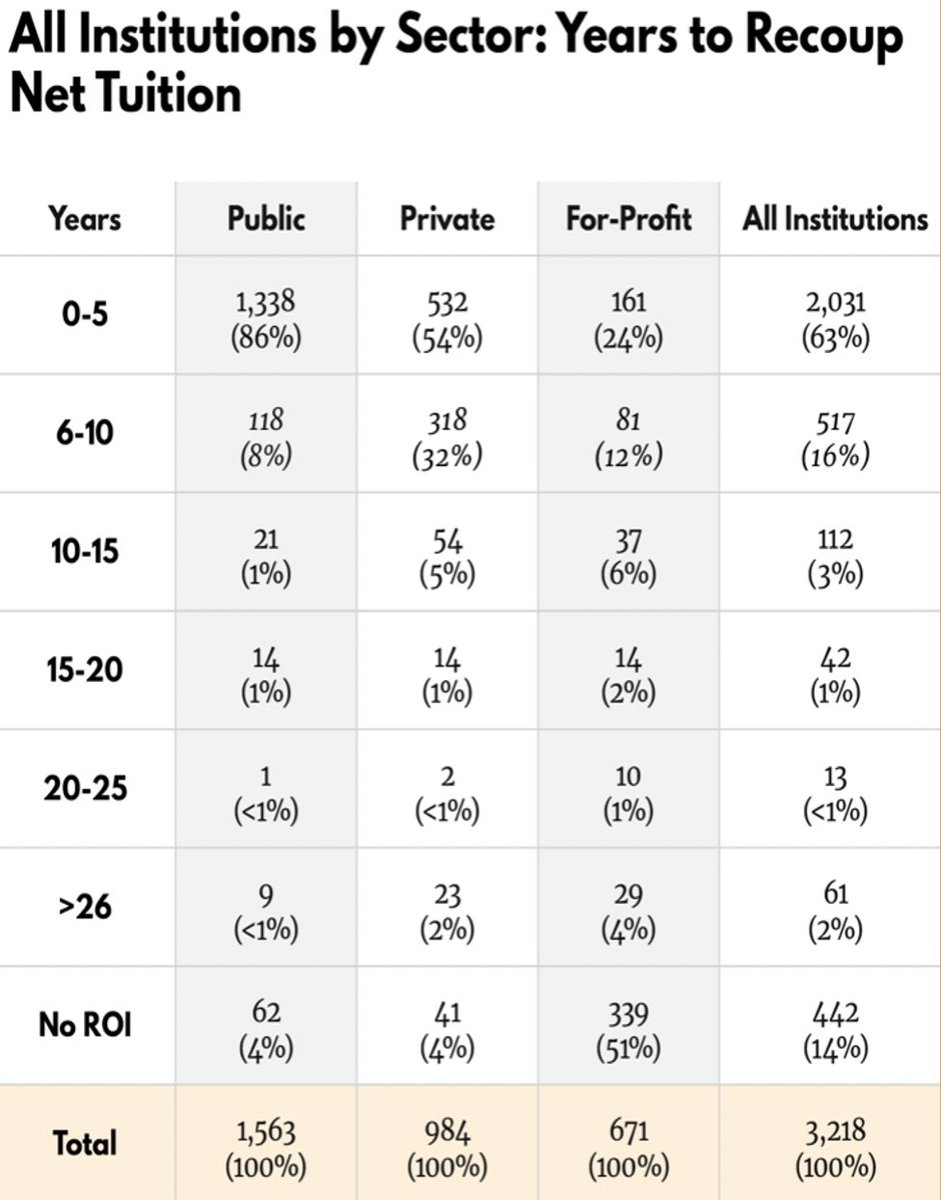NEW REPORT: Students pay a lot of money to attend institutions of #highered.
In our new report, we offer a new metric—a Price-to-Earnings Premium— that can be used to evaluate how long it actually takes students to recoup their educational investment. 1/8 https://www.thirdway.org/report/price-to-earnings-premium-a-new-way-of-measuring-return-on-investment-in-higher-ed">https://www.thirdway.org/report/pr...
In our new report, we offer a new metric—a Price-to-Earnings Premium— that can be used to evaluate how long it actually takes students to recoup their educational investment. 1/8 https://www.thirdway.org/report/price-to-earnings-premium-a-new-way-of-measuring-return-on-investment-in-higher-ed">https://www.thirdway.org/report/pr...
Here’s the idea. If students who pursue a certificate or degree subsequently earn more than their non-college going peers, that earnings boost can be used to recoup the amount they paid to obtain their certificate, associate’s, or bachelor’s degree. 2/8
To measure this, we pull data from @usedgov to get data on the price students pay annually at each institution and how much they earn 10 years after enrollment. We also use Census data to determine how much those with a high school degree—but no college—earn in each state. 3/8
We then look at the price that students pay out-of-pocket (after scholarships and grants) to obtain a credential relative to the additional amount that they earn annually beyond the typical high school graduate within the state their school is located. For example...4/8
Since Greenfield Community College primarily awards two-year degrees, it would cost the average full-time student $23,600 to earn a credential if they finished their associate’s degree in two years (annual net price $11,800 x two years). 5/8
Since the annual earnings premium of attending Greenfield is roughly $5,000 beyond a HS grad in Massachusetts, it would take them a little less than five years to recoup the $23,600 cost to earn an associate’s degree from the school. 6/8
I& #39;ll be posting more later about how this breaks down across different types of institutions, but a PEP can be used by prospective students to easily assess how long it will take to recoup their educational investment—or to compare those timelines across schools or programs. 7/8
Ultimately, the economic premium an institution provides to its students should allow them to pay down the cost of attendance within a reasonable amount of time. And if it never will, students and taxpayers should know that, too. 8/END

 Read on Twitter
Read on Twitter





